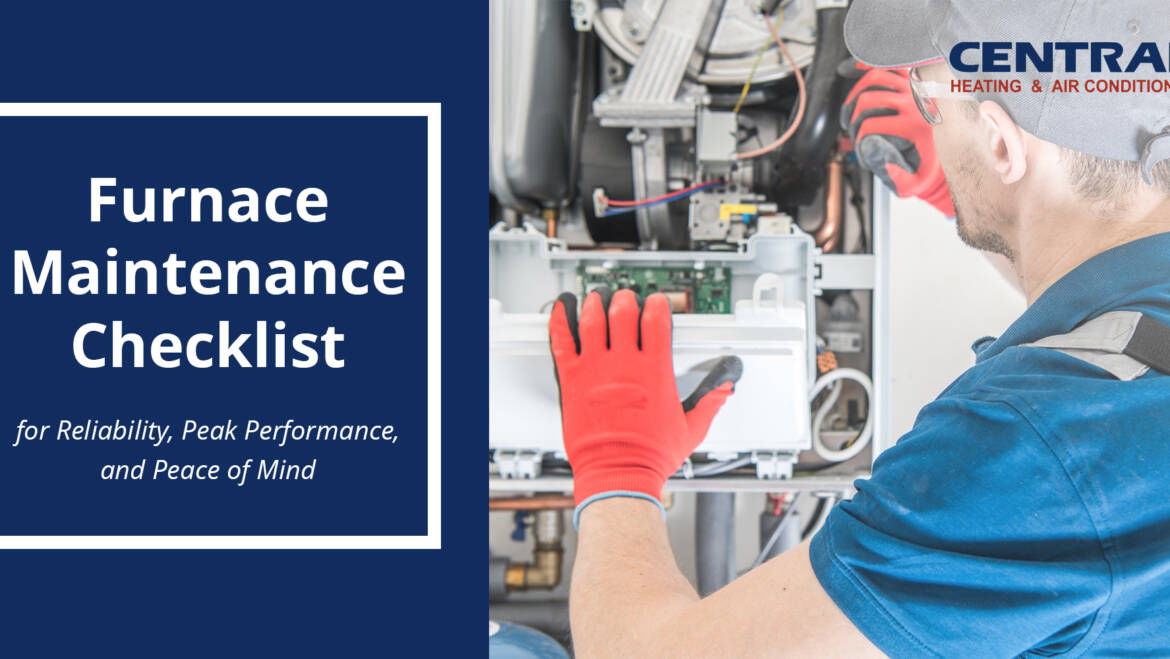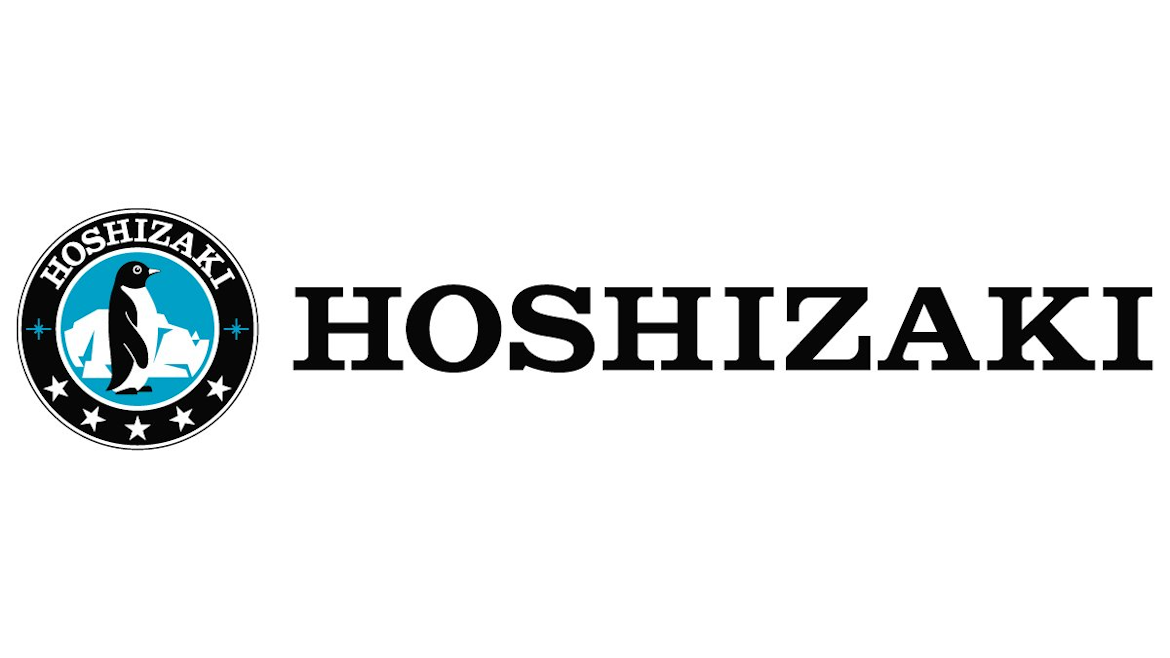Every homeowner wants their furnace in tip-top condition. Simple maintenance can get you there and pay dividends in your comfort, efficiency, and overall safety.
But as you know, keeping your furnace running efficiently and preventing the hassles of breakdowns is not always on the top of our minds.
As a homeowner, you have to become aware that furnace maintenance is a preventive service that involves an inspection and tune-up of your system.
Let’s face it …
The winter months are tough enough. You don’t need your furnace to fail in the middle of the night or just not put out enough heat.
Given most of us only call for HVAC service in an emergency or if something goes wrong, we wrote this article with you in mind.
Many homeowners choose to hire a trusted HVAC company to prepare their furnace for the winter months, while others take the do-it-yourself approach.
We recommend an annual service check by a professional to ensure your system is ready for peak performance. However, if you’re planning to take some maintenance steps yourself, the following checklist will help you successfully prepare your furnace for the winter season.
Keep reading…
But first, let’s answer those top furnace maintenance questions you might have on your mind.
9 Top Furnace Maintenance Questions Everyone Wants to be Answered
1. Do you need to service your furnace every year?
An annual checkup and a clean, well-adjusted heating system will save you money and extend the life of your furnace. Furnace manufacturers recommend yearly inspections and maintenance by a technician.
Some HVAC contractors suggest you can get by every other year if your furnace is under 10 years old. But any older, have them serviced annually.
2. What happens if you don’t service your furnace every year?
Some experts say up to 75 percent of no-heat calls in the winter are related to a lack of maintenance. Left unserviced, a furnace can stop working suddenly, leaving your family in the cold.
The minor problems can become more extensive and more expensive if you let them go over time.
Benefits of Fall Furnace Maintenance
- Lower Energy Costs – A well-maintained furnace uses less energy, saving you money on your energy bills.
- Longer Lifespan – Properly caring for your HVAC unit means it functions appropriately and will maintain its expected lifespan.
- Fewer Repairs – Experts agree that a furnace that is cared for will experience fewer repairs than one that is neglected.
- Improved Indoor Air Quality – HVAC units get dirty quickly. When this dirt and debris isn’t cleaned from the unit, it is reintroduced into your home, lowering your indoor air quality.
- Peace of Mind – When your furnace is maintained, you can rest assured that it functions safely and at maximum energy efficiency.
3. What happens if you don’t change the furnace filter?
When getting the most out of your furnace and maintaining your utilities, checking and changing your air filter is very important.
You need to change the air filter regularly, at least every three months or more. (consult with your manufacturer’s recommendations). A clogged air filter will restrict airflow, allowing pollen, dust, and other contaminants to affect your indoor air quality.
Here are reasons to change your furnace filter:
- Extend your furnace life
- Reduce energy bills
- Improve indoor air quality
- Prevent overheating or short cycling
- Temperature regulation
This one tip alone can save you all sorts of problems of what can go wrong when you have a clogged air filter. Dust and debris will restrict your airflow and put unnecessary strain on your furnace.
A new filter costs so little, while a furnace costs so much more. Why risk damaging it?
4. When should you get a furnace tune-up?
Typically, furnace checks and maintenance are performed before winter.
The fall season is a great time to ensure everything is running safely and efficiently. You don’t want to find out in the middle of a cold winter night.
5. How much does it cost to have your furnace cleaned?
It depends.
It depends on the services you are having done and the type of furnace you have. A furnace tune-up can range from $100 to $200. (but don’t hold me to it… it’s an estimate.
It also depends on where you live.
6. How long does a gas furnace last?
A well-maintained furnace will last you at least 15 to 20 years, but completing annual maintenance and being diligent with repairs can extend its life even longer.
Today’s furnaces can efficiently operate for 20-30 years, though the average life expectancy is 16-20.
How often your furnace is used determines wear and tear to parts involved in starting and stopping the system, such as fans and electronic ignitions.
Other factors to consider…
- Size – Size is not always the bigger, the better either. When the furnace is too large, it can cause issues, from short cycling to inefficient operation to an uncomfortable living space.
- Installation
- Thermostat setting
7. How much does a new furnace cost?
Here’s what HomeServe had to say about that…
Furnace Costs at a Glance
- Price range: $1,500-$6,500
- Mid-efficiency furnace: $1,500-$2,500
- High-efficiency furnace: $3,000-$5,000
- Installation: $950-$1,150
Cost factors to consider:
- Energy source
- Efficiency
- Furnace size
- Installation
- Warranty
- Brands
- Ongoing cost
You can read their full article: Need a New Furnace? Here’s What You Should Know
8. What are some signs your furnace needs to be cleaned or even replaced?
- Uneven temperatures
- New or increased noises
- Increase in your energy bills
9. What is done during a furnace tune-up?
Our 21-point clean & tune inspection includes:

Furnace Maintenance Checklist for Do-it-Yourselfers
Heating and cooling account for about 48% of the energy use in a typical U.S. home, making it the most significant energy expense for most homes. [source]
So, we created this fun checklist for you do-it-yourselfers to get ahead of the curve and keep warm and lower your energy expense.
We broke it down into three categories:
1. Reducing heat loss and lowering your bills
2. Improving your indoor air quality
3. Maintenance, inspection, and action

Like our infographic? Feel free to share it:
Reduce Heat Loss and Lower Your Monthly Bills
1. Set Your Thermostat Back 7°-10°F for 8 Hours to Save Money
You can save as much as 10% a year on heating and cooling by simply turning your thermostat back 7°-10°F for 8 hours a day from its standard-setting.
To do this easily, buy a programmable thermostat. By lowering the temperature for 8 hours a day, you save approximately $83 a year.
Going on vacation? You can set it lower to 55 degrees (without worrying about your pipes freezing).
Turning the heating temperature down at night and then back up in the morning saves a significant amount of energy.
“Mathematically speaking, the amount of energy required to keep a house warm is equal to the difference between the indoor and outdoor temperatures multiplied by the time that this difference is maintained.” [source]
2. Properly Calibrate Your Thermostat
If your thermostat isn’t correctly calibrated, you could be overspending on energy. Your thermostat can lose its calibration if dirt gets inside or if it gets accidentally bumped. Have your thermostat checked and calibrated annually, or install a computerized thermostat for the best fuel and cost-efficiency.
ABC Home and Commercial offer step-by-step instructions on how to calibrate your thermostat properly.
3. Replace an Older Furnace with a High-Efficiency Furnace
According to Jill Murphy, senior product marketing manager, residential heating, Lennox Industries Inc., “Replacing an older furnace that is 60 percent efficient with one that is 98 percent efficient can save homeowners up to $11,469 over the life of the system.” [source]
Furnaces use either gas, oil, or electricity for fuel. Efficiency is measured as an Annual Fuel Utilization Efficiency rating.
Modern furnaces can have ratings as high as 98.2% (which means only 1.8 % is exhaust).
If you are replacing an older furnace with a high-efficiency (90%+) furnace, you should see savings on your heating bills of 25% – 30%. [source]
4. Inspect, Clean, and Adjust Your Furnace’s Burners
Energy efficiency is gained or lost at your furnace’s burners.
“Be sure to look for any type of rust or corrosion that may have accumulated on the burners due to a condensate leak that might have gone undetected at some point during the life of the furnace,” says Brian Vinsant, product support specialist, residential heating equipment, Rheem Mfg. Co.
5. Reverse Your Ceiling Fans and Cut Your Heating Costs
Reverse your ceiling fans to force warm air downward, keeping your home more comfortable. This home maintenance task makes rooms with high ceilings more comfortable.
Switching to a clockwise rotation pushes the warm air that has risen to the ceiling back down into the living space. This can cut your heating costs by as much as 10 percent, according to Popular Mechanics.
6. Inspect and Boost Your Insulation
Adequate insulation will help keep your home warm in the winter. And if your insulation is insufficient, your heating system will have to work overtime this winter.
You can save money on heating costs by adding some insulation to your attic, walls, and crawlspace. Insulation is one of the best ways to save energy and reduce costs.
7. Check and Seal Your Ducts
Studies show 10 to 30 percent of heated (or cooled) air in an average system escapes from ducts. [source]
Ducts that leak air into an attic or crawl space can add hundreds of dollars a year to your heating and cooling bills. [source]
The ductwork that transports the heated air throughout your home will often become damaged with age. When this occurs, you open your indoor air up to microscopic air contaminants that can aggravate allergy and asthma symptoms and negatively affect your overall well-being.
These cracks, tears, and other damage will also reduce the furnace’s performance. The best DIY approach uses mastic sealant or metal tape to fix the damage and then insulate the ducts.
8. Allow Sunlight to Enter Your Home
During winter, keep the draperies and shades on your south-facing windows open during the day to allow the sunlight to enter your home and closed at night to reduce the chill you may feel from cold windows. [source]
9. Seal Air Leaks
Sealing air leaks can save up to 10% in heating bills. [source]
Most leaks can be fixed with a simple caulking gun.
Improve Indoor Air Quality
HVAC units get dirty quickly. When this dirt and debris isn’t cleaned from the unit, it is reintroduced into your home, lowering your indoor air quality.
10. Change Your Furnace Filter to Avoid Trouble
You may have changed it at the end of the heating season, or then again, you may have forgotten. A new filter costs so little, while a furnace costs so much; why risk damaging it?

Replacing the filter (or cleaning a permanent filter) is easy and puts you well on your way to preparing your furnace for winter. Using old filters puts more stress on the compressor and can lead to mechanical failures over time.
- Filters and coils should be cleaned, so the dirt inside doesn’t circulate in your home. Clean or replace filters on furnaces once a month or as recommended.
- Dirty filters make your furnace work harder. At a minimum, you should replace a disposable filter every six months (winter and summer) or your manufacturer’s recommendation.
- Clean warm-air registers, baseboard heaters, and radiators as needed. Make sure they’re not blocked by furniture, carpeting, or drapes.
11. Vacuum
Keep the area around your furnace and all areas free of dust. Use an ordinary vacuum to clean the room where your furnace works hard to keep you cozy.
Gently vacuum electrical connections to keep them dust-free and keep the floor clean so “dust bunnies” are not stirred and lifted onto the furnace.
Maintenance, Inspection, and Action
12. Maintain Performance Record
Write down the model numbers of all your products. It’s good to have them listed in a file for easy access. Keep a regular log of furnace performance. This will help you identify problems as they occur and provides you with an accurate method of tracking furnace efficiency.
13. Test Your Detectors Every 6 Months
You’ll want to check your carbon monoxide and smoke detectors. Buy a carbon monoxide (CO) detector – save yourself, possibly your family, and your pets by investing a few dollars in a carbon monoxide detector.
You can install it around 15 feet away from the furnace. Remember that carbon monoxide is odorless, colorless, tasteless, and invisible, making it extremely dangerous.
14. Listen for Unusual Sounds or Pay Attention to Strange Smells
- High-pitched squeal? It could be a slipped or frayed blower belt. Loud sounds can be an indication of a mechanical problem. Listen for banging, popping, rattling, and screeching noises.
- Nose around. Sniff the furnace room. Smells like rotten eggs? It could be a gas leak. Musty, grimy smell? Check for any oil leaks. Metal or iron smells? It could be an indication of your furnace motor starting to have trouble. (source)
15. Check the Electric Ignition or Pilot Light
If these are faulty, it will reduce the heat getting in your home. A “flickering or yellow pilot light could be a sign of excess carbon monoxide in gas furnaces.”
16. Turn off Kitchen, Bath, and Other Exhaust Fans
Turn off the kitchen, bath, and other exhaust fans within 20 minutes after cooking or bathing.
When replacing exhaust fans, consider installing high-efficiency, low-noise models.
17. Test Safety Features
Deliberately tripping and resetting safety controls ensures proper shut-off in the event of a real emergency.
18. Clean Your Flue and Chimney
You may feel comfortable doing this by investing in a chimney cleaning kit (brushes and fiberglass handles). However, you may be better off hiring a chimney sweep if you are unsure what to do (although it is not hard and only a little messy).
Your furnace flue ventilates toxic gases, so it must be clean and free of obstructions such as squirrels and bird nests or heavy deposits of soot.
19. Inspect and Lubricate all Moving Parts
A little light lubrication in all the right places can add years of service to your furnace.
20. Inspect the Electrical Connections and Systems
Loose connections can cause sparks or trip safety systems.
21. Make an Appointment Early in the Season
The last part of your work to prepare the furnace for winter is to call your helpful HVAC service company for a seasoned appointment.
Consider having a technician perform a thorough inspection and service your system. Consider our 21-point clean & tune inspection.
Conclusion
While most of the do-it-yourself furnace maintenance tips will go a long way to ensure your unit is functioning the way it was designed, you should not overlook the importance of a professional tune-up and preventive maintenance plan.
A well-trained and trusted HVAC technician has the knowledge to spot potential problems before they occur – something most homeowners cannot do and can keep your furnace functioning at its peak performance.
Whether you require installation, repair, or maintenance, our technicians will assist you with top-quality service at any time of the day or night. Take comfort in knowing your indoor air quality is the best it can be with MOE heating & cooling services Ontario's solution for heating, air conditioning, and ventilation that’s cooler than the rest.
Contact us to schedule a visit. Our qualified team of technicians, are always ready to help you and guide you for heating and cooling issues. Weather you want to replace an old furnace or install a brand new air conditioner, we are here to help you. Our main office is at Kitchener but we can service most of Ontario's cities
Source link




Add Comment